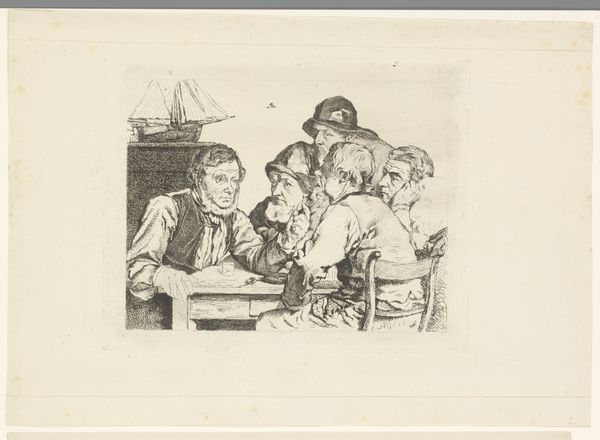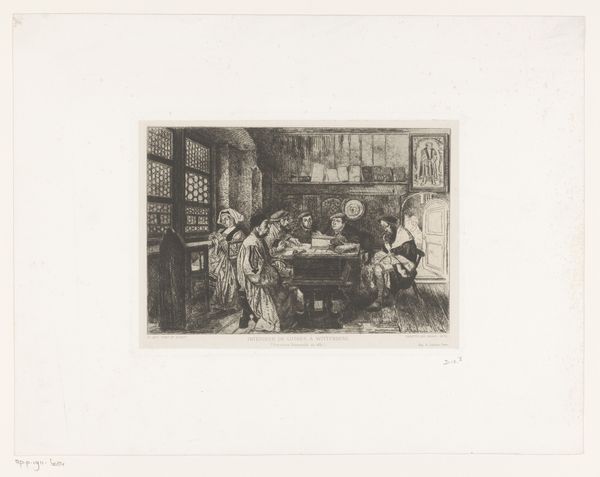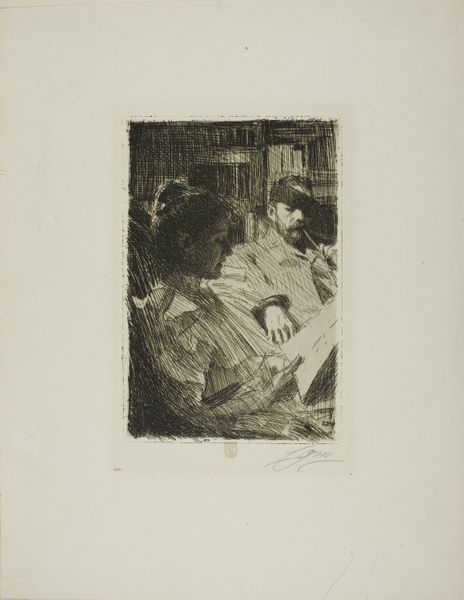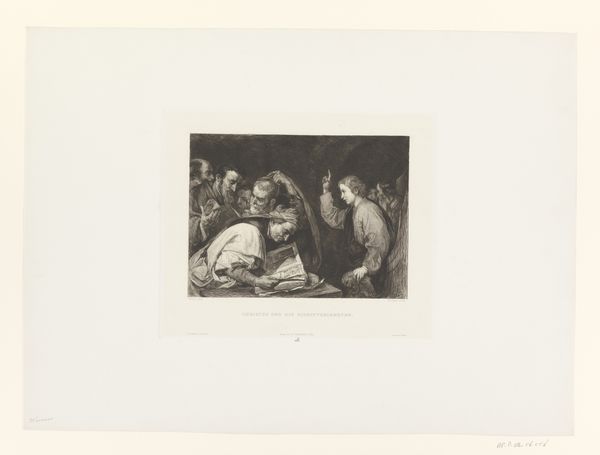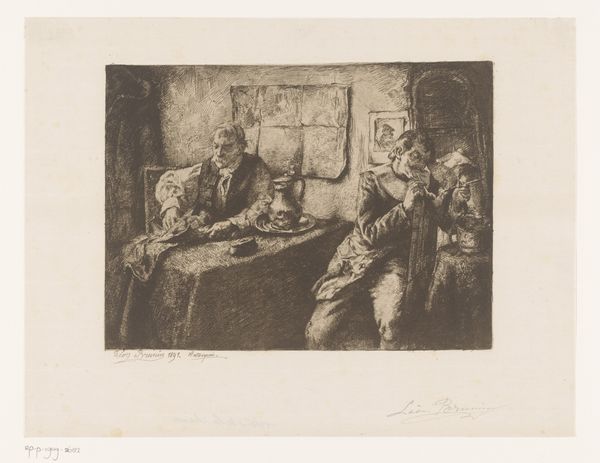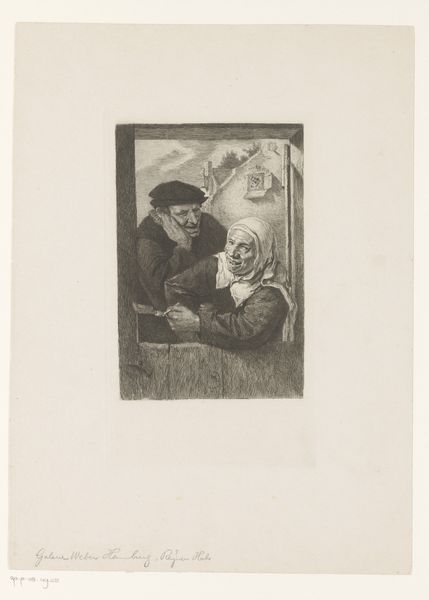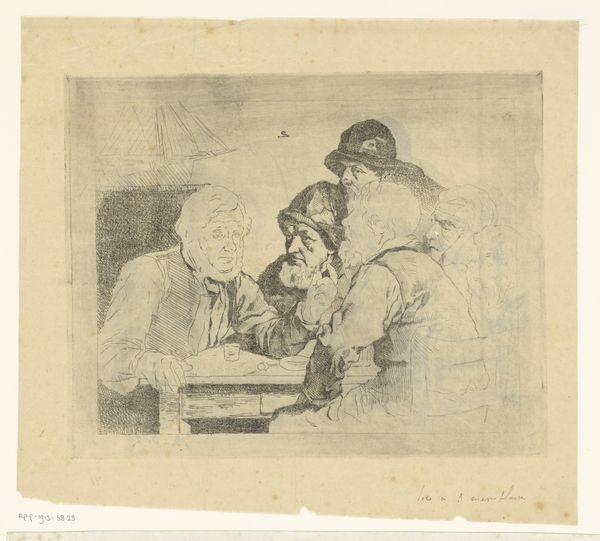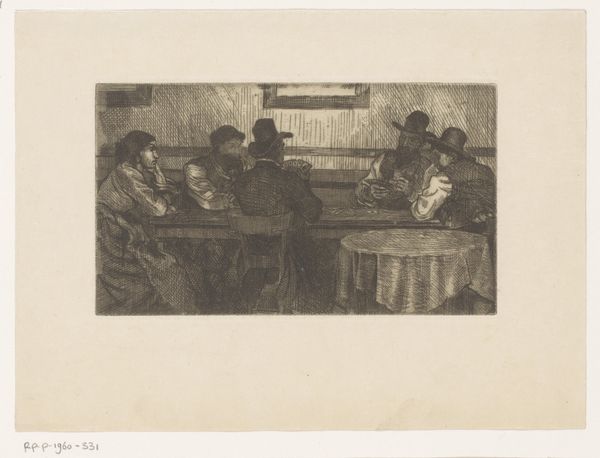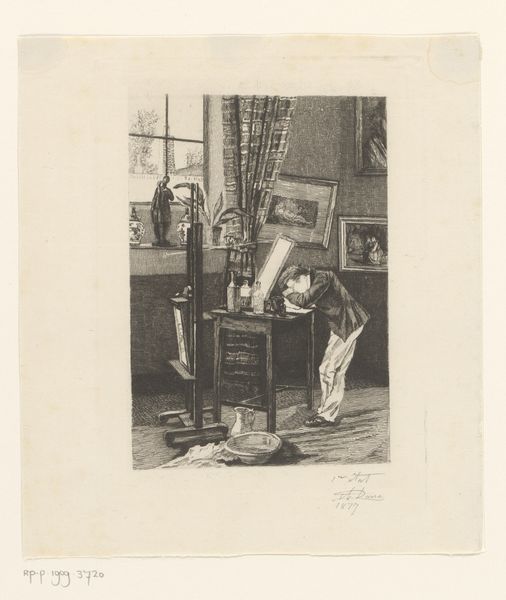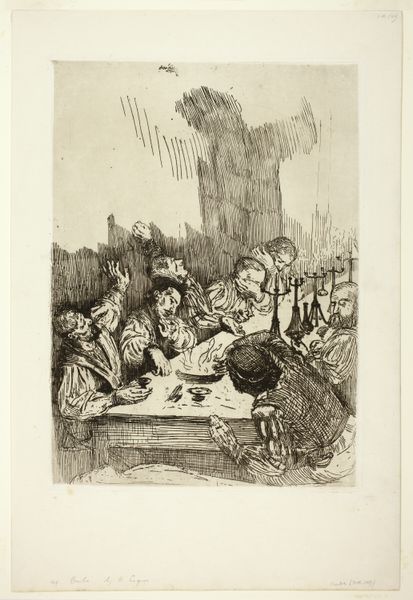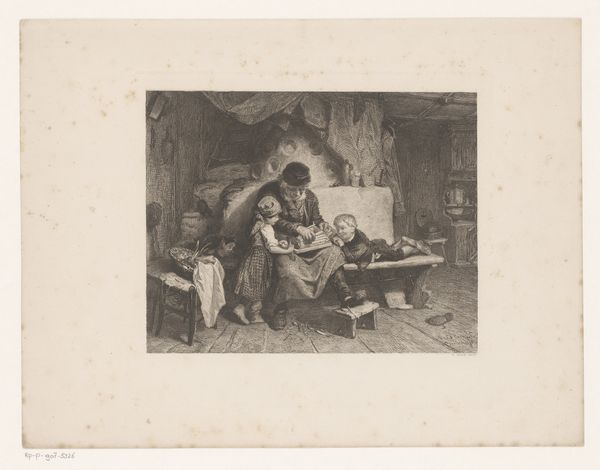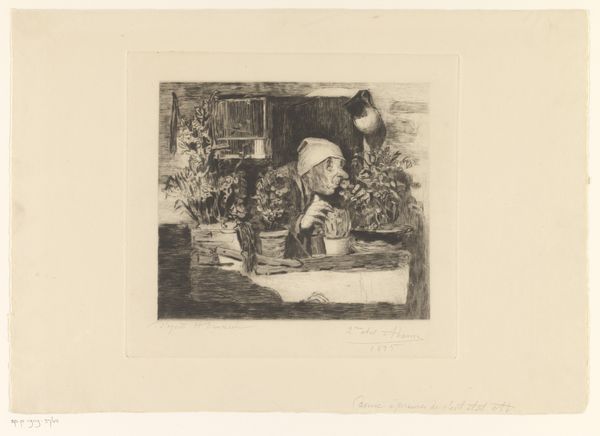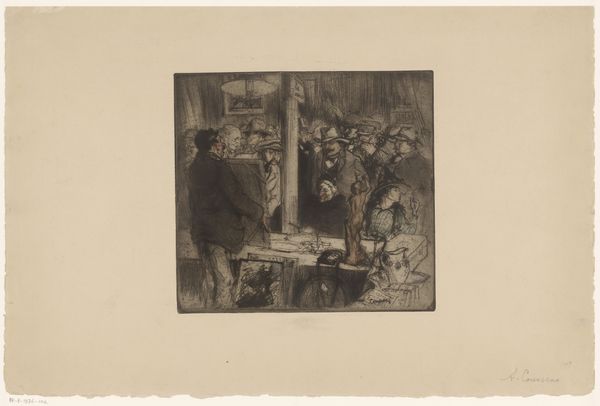
Dimensions: height 209 mm, width 258 mm
Copyright: Rijks Museum: Open Domain
Curator: Here we have Piet Verhaert's etching from around 1879, titled "Zeelieden gezeten aan tafel luisterend naar een van hen"—Sailors Seated at a Table Listening to One of Them. Editor: It's certainly atmospheric, isn’t it? All huddled together. It feels intimate, a shared moment, but also…sombre. The tones are so dark. Curator: Etchings like this one offered artists a relatively inexpensive way to reach a wider audience, allowing for the democratization of art, particularly images depicting the working class and their daily lives. Editor: You can certainly feel the weight of their lives etched onto their faces, can’t you? I'm struck by the roughness of the etching; you can practically feel the texture of the paper, emphasizing the worn fabrics of their clothes and their weather-beaten skin. Was Verhaert commenting on their economic circumstances do you think? Curator: Absolutely, representations of maritime laborers became more prominent with the rise of social realism, offering visual critiques and humanizing those whose toil powered industrial economies. But remember, the art market also played a role, driving production and shaping how artists depicted such scenes for collectors. Editor: True, so these images served a dual purpose—a form of social documentation and a product for consumption within the art market. You know, looking at it more closely, the details that ARE there, the texture on the faces, the faint depiction of a ship model behind them, makes me wonder if this was also created for a patron of seafaring profession in Antwerp. Curator: Perhaps someone wanting a portrait that symbolized his relationship with seafaring labor and the romance of the sea. Notice how Verhaert, within this genre scene, gives us what is practically a group portrait, subtly raising the status of these figures. Editor: Yes! Thinking about the conditions of the making itself does deepen my appreciation for it. There is a palpable sense of intimacy being created via this readily-producible print, allowing these 'sailors' lives' to enter middle-class parlors. Curator: Seeing the mechanics of production brings me to think of how art constantly negotiated societal hierarchies, both reinforcing and challenging them, influencing taste and contributing to how social identities were constructed. Editor: Agreed! Thinking about who bought, sold, traded these prints after the artist, helps humanize a print. Curator: Indeed. The materiality offers insights into both art production and how social narratives take physical shape.
Comments
No comments
Be the first to comment and join the conversation on the ultimate creative platform.
